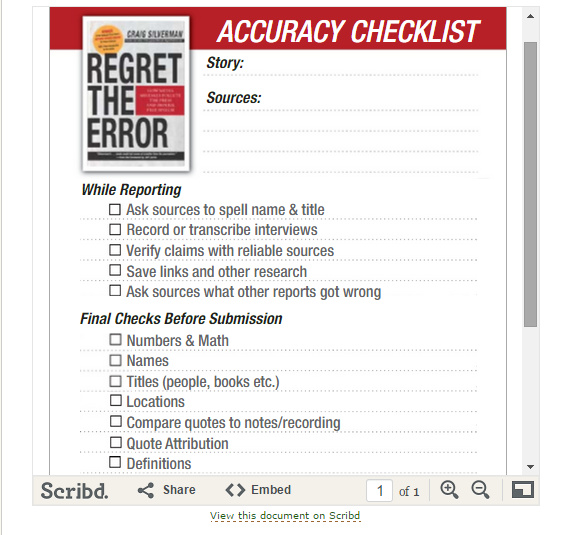Maintaining a constant flow of highly engaging copy leads many content marketers’ to-do lists. Supervising brand journalists or content creators probably is close behind. How can you accomplish everything and ensure your brand is publishing accurate content?
Research from the American Society of Business Publication Editors Ethics Committee offers some lessons for content marketers whether you publish original, curated, or aggregated content.
Take a facts-management approach
For many content marketers, fact-checking has been a do-it-yourself affair. Staffers do their own verification because hiring full-time fact-checkers is not possible in most budgets. But the array of misinformation has exploded online. Plus, growing demand for content now means more frequent deadlines. And mounting workloads have increased reliance on outsourced material to fill content demands. All those challenges create the perfect opportunity for accuracy to take a hit.
At ASBPE, we devoted January’s Ethics News Updates to a diverse lineup of fact-checking solutions. Our research revealed an absence of formal fact-checking policies in B2B circles. As a result, we have opted to provide a B2B Facts Management Guide. It will address how to identify important facts an assignment should include, fact-checking procedures, and miscellaneous management considerations.
Let’s take a glimpse at three red flags that should be addressed in any facts-management program:
1. Verify research.
Instructive in this respect – and many others – is the sourcing section of BuzzFeed’s Editorial Standards and Ethics Guide. Here is an excerpt from its recommendation for verifying polls and other studies:
When considering reporting on a study or poll, ask these questions:
- Have the authors included a detailed methodology?
- How many people did they study? (For most studies, be skeptical of anything below 100; for polls, anything below 1,000.)
- Do the authors have any conflicts of interest?
- For medical studies: Was the study performed on humans or other animals? (Drugs, for example, that work in mice might fail in humans.)
- For polls: How, precisely, were the questions worded?
- Never take information directly from a press release. Instead, ask the authors for a copy of the actual study or poll.
2. Use accuracy checklists.
Two media accuracy authorities, Poynter’s Regret the Error’s Craig Silverman and Louisiana State University scholar Steve Buttry, strongly recommend the creation of written guidelines for fact-gathering situations.
Recently, I asked two dozen freelance writers serving B2B clients if they used a checklist. Only one responded in the affirmative. All brands can benefit from Silverman and Buttry’s accuracy-checklist approach.
3. Confirm the validity of claims.
In my days as vice president/editorial director of a B2B multi-publisher, I took a rigid position on content claiming alleged competitive superiority. Editors could either confirm the claim with the source or delete the claim if source verification proved too hazardous. The risk in question could materialize if an accuracy check led to rejection of information provided by a resentful source. Editors also were instructed to delete endorsement language suggesting that the publication staff was partial to the source. Examples of endorsement violation would be not editing out adjectives such as “excellent,” “efficient,” “very useful,” or other such wording appearing in the source document. If the information is inaccurate in any way, offended parties often will assume the content publisher was aware of the inaccuracy but took no steps to correct it.
Additional sources
In the absence of formal guidelines, inaction is the likely course. So as you formalize and tailor your brand’s own fact-checking program, here are some additional resources:
- Society of Professional Journalist’s Toolbox: There are dozens of sources for the story-development process and reference purposes.
- ASBPE’s vetting research technique – Part I: B2B consultant and ethics committee member Robin Sherman shares 10 deadly sins of unethical scientific reporting.
- ASBPE’s vetting research technique – Part II: Six basic research components for fact-checking standards by Sherman.
- PR Newswire for Journalists – Faster Fact Checking: This four-part series provides information on sorting through statistics and other data, making sense of social media, working with crisis and public safety reporting tools, and understanding verification best practices.
- Verification Junkie: My personal favorite lives up to its description of being “a growing directory of tools for verifying, fact-checking, and assessing the validity of social media and user-generated content.”
Stay engaged with the latest content marketing news and insights. Connect today with the Content Marketing Institute and sign up for daily and/or weekly highlights of the CMI blog and exclusive content from CMI Founder Joe Pulizzi.
Cover image by SplitShire via pixabay.com



